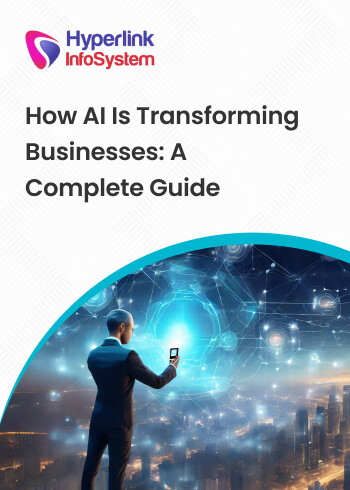After experiencing constant ups and downs in their retail businesses, some retailers finally decided to adopt some strategic changes in early 2020. A few retailers had opted to recruit niche specialists while others tried to dip their toes into artificial intelligence, data science and blockchain development.
Most of these plans had been accounted for towards the end of 2019 and for thousands of business owners, 2020 was supposed to be the year for exponential growth. Of course, this was before the coronavirus pandemic struck all over the world.
2020 Was Supposed to Be the Year of Growth for Retail Businesses
Instead, a novel virus erupted and spread like wildfire and has been wreaking havoc ever since. Even though some of us were bracing ourselves for the next World War and others had changed their lifestyles to slow down the impact of global warming, something as small as a virus seeped in and rattled everything up quite badly.
This outbreak was nothing short of a wakeup call - especially for business owners since the pandemic brought about a paradigm shift in the way consumers bought goods and services.
For this reason, we have compiled this post to shed some light on how the Covid-19 pandemic affected the retail sector and how customers can continue shopping with innovative retail technologies. However, before we dive into all the latest and future shopping trends, let's quickly go over the threats faced by the retail industry because of the pandemic.
(After the pandemic struck, forecasted retail sales growth in 2020 amounted to -5.7%[Source])
Threats Covid-19 Brought Along for the Retail Sector
We’ve all read about the adverse impacts of the coronavirus on different industries all over the world. So much so that all those news channels and rumors have made us familiar with ballpark figures of the situation.
For this reason, we aren’t going to dive into too many specifics. For the retail industry, the sentiment of it all is quite enough to describe the current situation.
As soon as the outbreak struck, it had immediately disrupted the normalcy of the retail industry. Before the virus, consumers never hesitated to walk into a retail store to make everyday purchases. It was a normal occurrence for people to visit shopping complexes or shopping malls.
Now however, the changes are quite evident.
Decreased Footfall
While intending to curb the spread of the virus and keep the community safe, several governments all over the world implemented strict regulations. These regulations varied from country to country and usually included either a shelter in-place or a complete lockdown in order to prevent people from getting together in groups.
Naturally, these regulations had a direct influence on the global retail sector and inevitably led to decreased footfall. To expand on this particular issue, there were 2 common aspects to this threat:
â— People were too skeptical about stepping outside to purchase goods due to the fear of contracting the virus
â— Some no longer had the motivation to buy goods since they were now in a state of lockdown
However, this particular threat wasn’t the trend for retail stores such as pharmacies, grocery stores or supermarkets. On the contrary, these outlets started experiencing an influx of footfall, mainly because of the perception of limited availability and hoarding essentials.
For instance, retail outlets in the UK had reported an unexpected 20.6% increase in sales during March since consumers were hoarding goods out of panic.
Business Sustenance
Decreased footfall in the retail sector quickly translated to decreased business. This, in turn, resulted in retail stores being unable to pay bills such as salaries, electricity, space rents etc.
This situation took a heavy toll on small to medium sized retailers, since they are already faced with a few other hardships of running their business. With the lockdown periods extending as long as several months, the businesses that had zero to minimal revenues were bound to crumble.
Safety and Hygiene Standards
The retail stores that were exempted from strict rules and regulations, were faced with a necessity to update and maintain hygiene protocols. Even despite these hygiene protocols and their need for essential products, some consumers continued to display signs of hesitancy to step into retail stores.
In addition to this, retail stores saw migrant employees return to their homes while the entire burden was shifted on temporary staff. While all of this happened, retail business owners were responsible for ensuring that social distancing was maintained and more importantly, that the staff wore masks and protective gear.
Other than these problems, many retail stores also reported that they were facing issues in maintaining the supply chain of everyday goods since so many areas had closed their boundaries.
Technologies Adopted by the Retail Industry
Even though most retail business owners were dealing with problems due to the pandemic, there was still hope; hope in what we call technology.
Technology has always managed to be a beacon of light that guides businesses out of tough spots like the one we’re facing currently. Therefore, for all the shattered retail businesses out there, let’s discuss how technologies can be adopted to make way for increased revenues, both - during and after the pandemic.
On-Demand Services
The Covid-19 pandemic has caused a significant shift in consumer mindsets. Millennials and Gen Z aside, even Generation X and previous generations are now getting a taste of on-demand services.
E-commerce and the convenience it presents has been experienced by most consumers across the globe. So much so that e-commerce could become the norm once this outbreak subsides.
If you didn’t already know, Amazon had experienced an unprecedented hike in online orders which was equivalent to what they usually experienced during Black Friday and Cyber Monday deals. Considering this hike in sales, Amazon had to employ and train an additional 100,000 workers in their warehouses in order to keep up with demands.
(Total E-Commerce Sales Changes for the Top 3 Product Categories[Source])
(Total E-Commerce Sales Changes for the Top 3 Product Categories[Source])
Technically speaking, social distancing is the inevitable future until scientists come up with a vaccine that is accepted by the FDA and is supplied through mainstream channels. Until then, it is our responsibility to prevent large waves of outbreak. For this reason, business owners should not expect an increase in footfall if the lockdown restrictions are lifted.
Instead, retailers should now foresee future trends and adapt to emerging technologies. This is why many retailers have already switched to selling goods online. In order to sustain a retail business, owners will inevitably have to set up an online portal for their products and services.
Additionally, targeted and local marketing strategies can team up with an optimized supply chain to ensure that your retail business never falls short of customers. A great place to start will be to launch a mobile app or website based on your niche and the requirements of your consumers.
Augmented Reality
Even before the pandemic, augmented reality was a very underutilized technology. However, now this technology could be the future of the retail industry. For instance, if you own a jewelry or apparel store, it could actually be a complementary idea to use augmented reality to boost sales.
Think about it - augmented reality could remove all those clouds of skepticism that surround buying these goods from online stores. Customers will now be able to virtually try on anything from your collections and, in turn, proceed to buy whatever suits them most.
Lenskart and a few other similar retail businesses have already started implementing augmented reality in their business model. If you have a similar business, you could try implementing this cutting edge technology to experience the same benefits.
Marketing Collaterals
You may have employed a salesperson to greet customers whenever they walk into a store. These salespersons offer a personalized service to consumers since they directly deal with their individual concerns. Well, with social distancing on the rise, how could retail businesses offer such services via a digital medium?
This is where education content can come into play. If your customers/website visitors have a genuine problem, you could provide them with a probable solution via how-to videos or tutorials.
Some retailers are already making use of videos, eBooks and brochures to act as helpful resources and marketing collaterals for consumers. The type of content you adopt should depend on what good you are selling and what your consumers prefer.
Once your consumers are enlightened, you can get right to pushing sales and translating these website visitors into conversions. Of course, the more creative you get, the more captivated your consumers will be.
Digital Marketing
Digital marketing had become a common marketing channel a decade ago but now it is being considered a necessity. With very limited places for consumers to go, most (or all) of them can be seen online, engaging with their favorite games, video streaming websites, blogs and other digital productivity places.
It is the responsibility of the retail business owner to know exactly where their target market is and how they can use digital marketing to attract consumers. From organic rankings to paid advertisements and influencer marketing, your strategy should boil down to driving traffic towards your e-commerce website.
If your website is designed professionally and you’re selling all the right goods, you wouldn’t have to go beyond digital marketing to push sales.
One other reason it is essential to start digital marketing right now is because experts are anticipating what is known as ‘revenge shopping’. Due to the strict restrictions during lockdown, consumers were anxiously waiting to break free and buy all the goods they had passed on.
This overindulgence known as revenge shopping was actually recorded in China where a single store had experienced sales of nearly
$2.7 million in just a single day. Similarly, in countries like India, experts have anticipated that millennials will break out into a shopping rage as soon as the Covid-19 pandemic is lifted.
For this reason, every retail business owner should get right to building a neat e-commerce website that synergizes with all the right digital marketing channels. The sooner each retail business owner starts adopting these technologies, the bigger advantage they shall have over their competitors.
7 Predictions of How Covid-19 Will Change the Future of the Retail Sector
Though uncertainties still remain, the following observations have been reported by experts for the not-so-distant future of the retailing industry:
Diversified Supply Chains
Since China joined the World Trade Organization in 2001, the country has elevated its position on a global scale. China’s annual economic output has increased sevenfold, so much so that they had reached approximately $14.3 trillion in 2019. To put things in perspective, China had become the largest exporter of goods and was responsible for nearly a third of the global share of manufacturing.
When things couldn’t get any better for China, the coronavirus outbreak resulted in the closure of factories and instantly led to a record low for manufacturing. This, ultimately, caused supply chains to break and, in turn, made it very difficult for manufacturers to obtain components. As a result, retailers couldn’t get their hands on finished products to sell to consumers.
These challenges also underscored the rest of the world’s dependence on Chinese manufacturers, since they now realized the need for diversification. During this time, Japan had already committed an expense of over $2 billion to fund Japanese multinational companies to extradite their manufacturing operations out of the struggling country.
Acceleration of E-Commerce
Among the most profound consumer behavior changes that unfolded during the pandemic was a shift toward digital stores. In 2019, 13% of all products were being bought online by customers all over the globe, as opposed to just 6% in 2014.
It is safe to say that the pandemic will keep accelerating the percentage of e-commerce adoption since there are still many people experimenting and becoming resilient with their online channel during isolation.
Currently, online grocery retailers seem to take up most of the spotlight. Today’s homebound consumers are all for obtaining groceries without stepping out of their virus-free homes. Even though a chunk of this demand is expected to drop as soon as lockdown restrictions are lifted, the majority of consumers are expected to permanently stick to e-commerce.
The latter are following the footsteps of South Korean consumers during the 2015 MERS outbreak. In fact, as many as 51% of South Korean consumers had been reported to have bought food and beverages via their smartphones in March. This percentage also happens to be the 2nd highest share of e-commerce customers in the world.
Boosts in Contactless Payments
Given all the safety concerns during the pandemic, consumers can be seen opting for contactless mobile and card payments as opposed to touching point of sale terminal keypads or exchanging cash. As of March, 22% of all consumers had used their digital wallet to buy at least one product from a physical store.
Several stakeholders were also very quick in responding to these consumer behaviors. For instance, MasterCard reported that 75% of their transactions in Europe were contactless. This is why they decided to raise the preset limits for contactless payments in 29 European countries as well as removed the need for a PIN during transactions.
On the other hand, Walmart managed to modify self-checkout stations in order to make contactless systems seamless. Similarly, Publix Super Markets sped up their tech transition to help speed up adoption of contactless payment way before their original plans.
Prolonged social distancing is going to further ingrain these habits among consumers and they are expected to take precautionary measures even after lockdown restrictions are lifted.
Revaluated E-Commerce
Economic, environmental and technological factors have come together in recent years to support the idea of secondhand or resale shopping in becoming a mainstream business. A number of online resale businesses such as ThredUp and Depop have been kick-started alongside distinguished resale players (such as eBay).
While the expected economic fallout from Covid-19 should typically accelerate the trend for resale, consumer’s psychological fears of continually washing and disinfecting hands will naturally make them think twice about second hand goods.
These very fears are also expected to impact clothing rental retailers where consumers could borrow and wear apparel or accessories for a prepaid fee.
(Internet Retail Sales in the UK (2017 - 2020)[Source])
Reimagined Store Pickups
Retailers that were previously relying on in-person interactions are bound to face a very prolonged dip in their store’s visitors since public officials are still promoting social distancing. For this reason, the booming online shopping market will continue to rise while also shining a spotlight on a few delivery options.
Curbside pickup, for instance, will remain the go-to option while some retailers also adopt drive-thru technologies to better facilitate their stock.
When retailers lose out on upselling since consumers don’t get to browse through their aisles, they also need to think about exploring a few other pickup options. This should be done in order to reduce delivery costs that might be cutting into their margins.
In late March, a ¼ of the global e-commerce consumer base started viewing click-and-collect as a great delivery feature for online stores.
Big Stores Will Get Bigger
In 2019, e-commerce behemoths, Alibaba and Amazon controlled at least a third of the global e-commerce market. The pandemic and store closures actually helped extend their dominance because Amazon, for example, had to hire 175,000 new workers as their consumer base’s spending habits spiked by 35%.
These titans are, therefore, expected to come out even stronger after the pandemic while permanently reshaping the retail sector forever.
Technology and Commerce Will Be Interwoven
Technology has been at the forefront of businesses and consumers during the outbreak. This is why the trajectory of some technologies, like cloud computing, is anticipated to accelerate and will help businesses become more flexible.
More specifically, robotics are already seeing an exponential growth all over the world in order to reduce human interaction. For instance, ‘MeituanDianping’, a Chinese delivery app, began using
autonomous vehicles in order to deliver groceries to Beijing customers in February.
Even IKEA hopped onto the bandwagon and acquired an augmented reality startup which enabled potential consumers to visualize home furnishing products in their actual living spaces.
The growing role of technologies in the retail industry (and several other industries) will be among the most long-term impacts of the pandemic. While a realistic end of the outbreak and the potential pace for recoveries is still unknown, technology is definitely here to stay.
Innovative Retail Technologies Required to Make Stores Secure
On May 26th, the UK government issued guidelines to reopen retail stores on June 15th. Since this date, most, if not all, retail stores have reopened gradually. On the other hand, some stores such as swimwear and lingerie stores in Boux Avenue only just began to reopen.
Even though each of these retailers has interpreted the government’s guidelines in their own way, there are some aspects that each retailer absolutely needs to pay attention to. Tape and Perspex, for instance, has become a very familiar sight in most of these stores.
However, since the new minimum standards of hygiene are set higher than before and because people are taking social distancing seriously, retailers have to go beyond tape and Perspex. This is why we are about to discuss some technologies being considered by retailers to be truly ‘Covid-19 secure’.
All of these technologies are meant to help create a safe environment for retail store employees and customers alike. Let’s briefly discuss how each technology helps both parties:
Store Occupancy Management Systems
Soon enough, the 2-metre rule will turn into just 1-metre. However, this will only be achieved if retailers can manage the number of people within their premises. This includes formulating a new strategy for entertainment, hospitality and the design of confined spaces.
Many of the businesses that have been affected by footfall are now leaning towards trying store occupancy management systems. Even though they are reporting varying degrees of success, some businesses are using it for their daily affairs. For example, AlphaDisplay, the Austrian tech company, is using an accurate system that automatically controls the number of people who enters their store.
Utilizing digital displays and sensors, the counting app is programmed to work quite like a traffic light system. In doing so, it detects how many people are already inside the store and matches them to the preset maximum number of consumers allowed at any time of the day.
Retail Choreography Software
Most of us have become too withdrawn from normal social standards to just walk into a store - especially if it is a smaller room as opposed to a larger market. In addition to this, the current weather doesn’t present any problems for people standing in a queue, waiting for your turn to enter the store. However, in the upcoming winter months, the weather will be an entirely different story.
What if customers could virtually queue-up for places they would like to enter? Well,
Qudini came up with an app that more or less follows the same principle and allows people to sit at home and wait for their turn to enter places such as museums and amusement parks.
Currently, this app has also been extended towards facilitating booking time slots for stores and facilitating appointments virtually at, say, the dentist’s office. What’s even better is that Qudini is claiming to have brought forward an impressive boost of sales wherever their technology was employed.
Qudini reported that they recorded a
33% increase in the average value of transactions for each customer. Their hypothesis for these findings was as simple as having established a link between timely appointments and customers automatically perceiving additional value.
Touchscreen Protection
One hygiene factor that no one seemed to take seriously until the pandemic hit was public access touchscreens. These screens were ubiquitous in most entertainment, hospitality and retail settings, among so many more. Now, however, every time a visiting customer uses them, they potentially put themselves and a lot of other people at risk.
To counter this, Kastus, a Dublin-based company has been working on manufacturing antimicrobial coatings that can be cast over touchscreens. After working on their brilliant idea for a number of years, they were finally able to finalize a version that offered touchscreen users complete immunity from the coronavirus.
John Browne, the founder of Kastus, said that touchscreen technologies represent a huge risk for cross contamination and the spread of diseases. For this reason, Kastus’s cutting edge antimicrobial technologies could be very effective against countering the spread of coronavirus. The founder continued to proudly state that their solutions will enable retailers to reopen safely with measures in place to protect their employees and customers.
Retail Design: Low Touch and High Sense Retail Innovation
If retail business owners wish to bounce back once the lockdown is lifted, they can only do so by establishing their stores not only as an experiential playground but also as a transparent and trusted haven.
Doing so will be important because not only will it inspire confidence amongst skeptical consumers but it will also be able to attract super-hygiene-conscious customers. Additionally, this could also make sure that their operations continue as close to the traditional shopping experience as possible, even if another Covid-19 relapse occurs.
The sight of store representatives wearing face masks and gloves, wipe-down stations around trolley stands, ‘no-handling’ signs near tills and shelves and the likes have become the norm for consumers. All of this relates to one mantra and it goes something like: touch as little as possible and if you do, sanitize your hands after.
All of these efforts of convincing consumers of hygiene standards is also hastening the adoption of innovative retail technologies that are targeted towards solving another problem - convenience. Of course, these technologies will also present very valuable side benefits such as lowering the interaction of consumers with other people, infrastructure or even products.
Even though Amazon’s ‘just-walk-out’ retail store system has been implemented very slowly, it is the reason their stores have been able to scale to supermarket sizes. This system makes sure that customers don’t have to touch anything other than those products that they are going home with.
While this system has been in use, Amazon simultaneously also set up a website called
JustWalkOut, which offered to white label this retail innovation for other businesses. There’s no doubt about the fact that Amazon’s enquiries will have exponentially increased since the website was made live.
Quick backstory: these autonomous stores had already been launched in China, all the way back in 2016. Even though the idea was appreciated back then, it was perceived as high-end indulgence and quickly disappeared from the scene until it’s resurgence via Amazon.
Suning is another leading operator of low-touch technology retail stores and had made sure all 24 locations of its stores were fully automated as early as February. Xu Hongping, an executive at Suning, said in an interview that during the Covid-19 outbreak, their ability to operate autonomously had coincided with their immediate need to minimize all human interaction.
The executive continued by saying that on normal days, these low-touch technologies help them increase their overall efficiency. For instance, they can reduce the number of employees working in the store to a bare minimum while inventory checking is made much easier.
Hongping’s final point is as important as the crux of the statement. You see, real time inventory checking helps retailers anticipate demand spikes as most of us saw essentials disappear before the lockdown was implemented. For this reason, Gene Bornac, the Senior VP of
enVista Consulting said that the technologies most retailers are chasing right now are meant to grant them more flexibility in ordering and fulfilling demands.
Bornac continued to say that retailers have still not managed to gain a complete understanding of consumer demands and most of the technologies they are considering have applications of machine learning and artificial intelligence. These will be used in synergy for accurate forecasts and allocation of resources.
6 Tech Startups That Could Help Retailers Deal With the Impact of Covid-19
Since retail brands from all over the globe have announced temporary shutdowns or reduced store hours, some are on the lookout for solutions to help deal with their situations. In this day and age, where there is a problem, there is a startup and the following tech startups have been launched to help interested retail stores:
The Call List
The Call List can be described as an interactive plugin that utilizes video to stimulate e-commerce. This New York-based tech startup is helping brands form or deepen their relationships with consumers by monetizing interactive video conferences.
With the help of this plugin, brands can communicate with their entire target population simultaneously to announce products so consumers can shop during the video chat. This interactive tool can help potential customers engage with and get in touch with product experts, influencers and even their creators.
Remesh
Since focus groups and live events keep getting postponed until further notice, brands are having trouble staying up to date with consumer preferences.
Remesh solves this problem by allowing brands to collect consumer insights via small virtual focus groups or audiences. In doing so, brands can collect their consumers’ feedback and synthesize it into a relatable sentiment.
Remesh was originally kick-started in 2013 and its headquarters were formed in New York. Over the years, they were able to design an AI-powered platform which enabled its users to spark up live conversation with consumers in order to capture and organize responses in real-time.
The users of this technology (retail brands) could understand their employees’ and customers’ preferences in order to make the best business decisions based on engagements with up to 1000 people simultaneously and in real-time.
ZigZag Global
Since retailers should expect most of their consumers to put off returning to their store, most of them are depending on increasing online operations. Of course, some retailers will have to depend on a stronger return management solution.
ZigZag Global is a tech startup that is going to help make these returns easier for retailers by reducing their overall lead times and providing an optimal shopping experience to everyone.
ZigZag Global is, therefore, offering retailers a software platform that can manage global returns for retailers by connecting them with over 200 warehouses that may be spread across 130 countries.
Not only does this make sure customers experience faster refunds but retailers could use this platform to offer local redistribution, refurbishment, consolidation, reselling and recycling stock on an international scale. Of course, all of this is done on a revenue-sharing basis.
Lunchbox
While all of your favorite restaurants shift to delivery/takeout business models, all of them should seriously consider adopting
Lunchbox. This end-to-end POS technology enables restaurant chains to use a mobile app to accept orders and to deliver efficiency at scale.
Lunchbox has, therefore, created this solution as a white-label app that takes over restaurants’ kiosk systems and web ordering so restaurants can better engage with their customers across diverse touch points.
Kustomer
Retail store customers may already be cranky from being stuck at home all day long and for this reason, business owners should make sure their e-commerce experience doesn't annoy them any further.
Identifying an opportunity here,
Kustomer came up with a way of managing conversations with customers and empowering customer support teams to best serve their now wider target audiences.
Kustomer is another tech startup that has setup its headquarters in New York and it offers Omni-channel SaaS platforms that specialize in the area of customer service. It can be used to meet every need of contact centers by unifying data sourced from multiple departments and hence enable companies to deliver better service. Additionally, their retail innovations also help customer support teams get back to customers while keeping to quicker timelines.
Apple’s LIDAR Scanner
In early 2019, Gartner had
indicated that in 2020, a little over a 100 million shoppers are expected to switch to augmented reality to boost their shopping experience. Not only were they right but the Covid-19 quarantine actually increased the demand for AR systems by relying on a ‘try-it-before-you-buy-it’ approach.
Not so long ago, Apple launched the
LIDAR Scanner that helped shoppers place virtual representations of products on physical surfaces with precision that was accurate to the nearest millimeter! These realistic interactions between virtual and real goods helped consumers replenish their trust in retailers and naturally, boosted their sales during lockdown.
Seeing its successful application, a few tech-friendly retailers hopped onto the bandwagon and started using AR-based apps to help their customers choose the best products for their needs. For example,
IKEA helped customers visualize pieces of furniture in their homes via a virtual representation of the product through customers’ smartphone cameras in real-time.
Final Thoughts
Safely reopening and resuming normal operations is the number one goal for all retail business owners. Since a large number of these businesses have been traditionally driven by the inevitable need for human interaction, the challenges faced by them during and after the Covid-19 lockdown may seem insurmountable.
These challenges are bound to lead to most small to medium-sized retailers going out of business since they couldn’t handle the lack of footfall in their stores. To counter this, these retailers need to deploy the right innovative retail technologies to significantly mitigate the risk of losing consumers and eventually shutting down operations.
Retail technologies are the key to unlocking a business’s true potential during and after the lockdown is lifted. As these businesses and consumers emerge from the worst, they will already be used to engaging with these technologies. In other words, these technologies are here to stay.
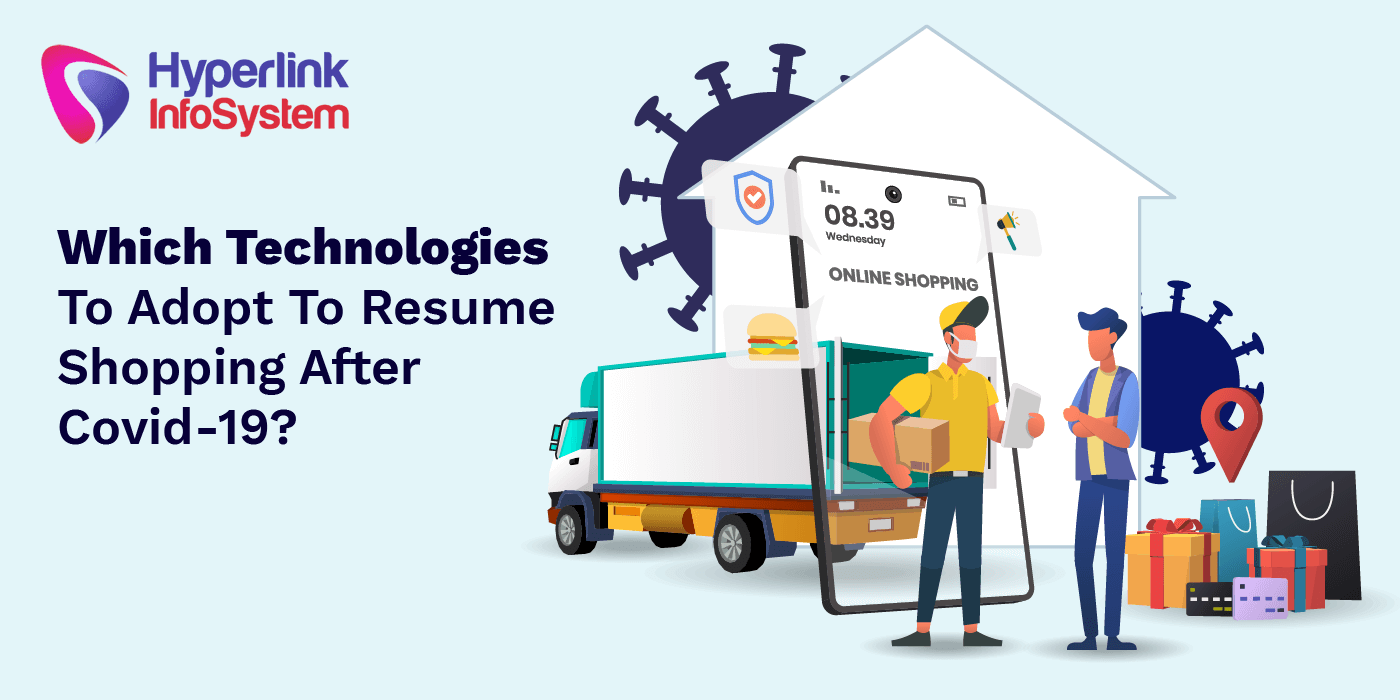
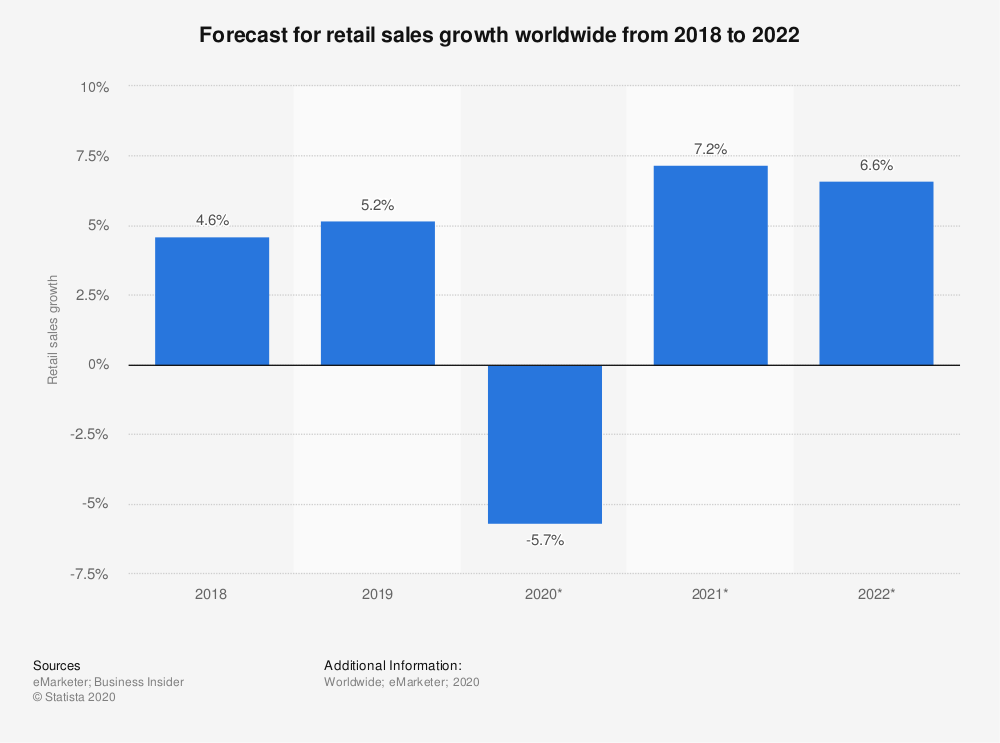
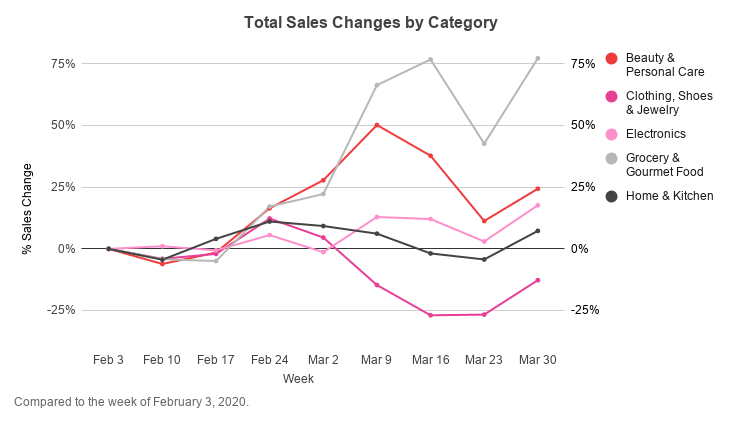
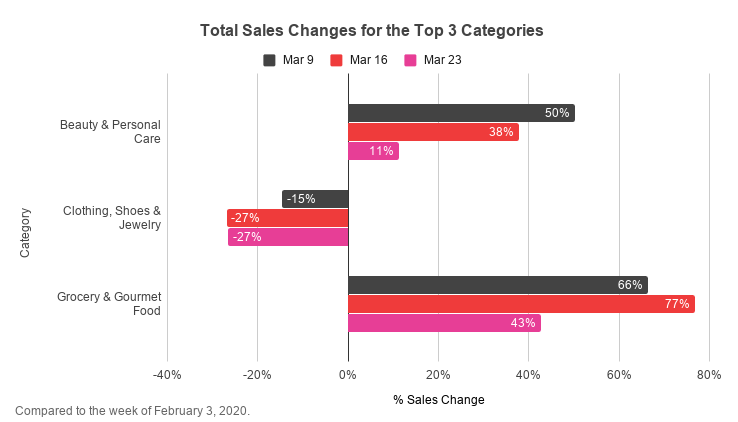
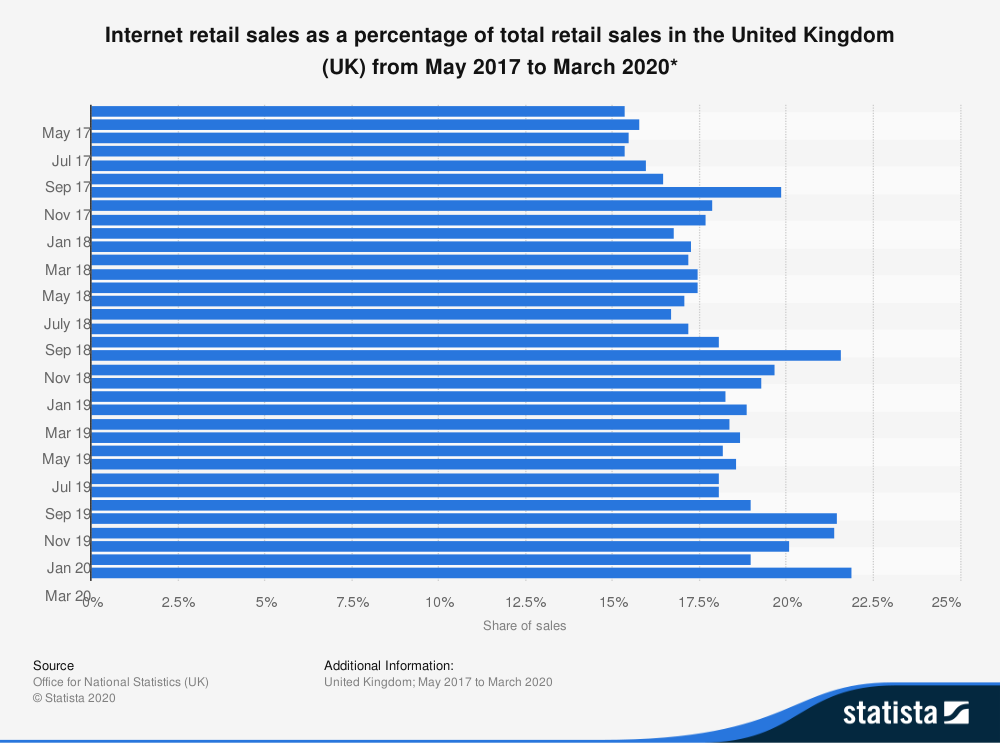
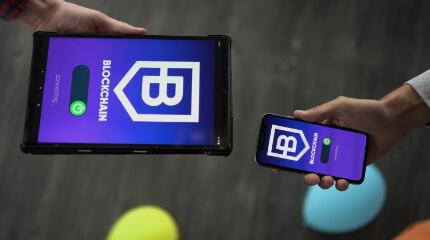

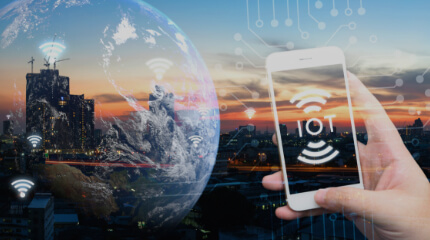














 Next
Next
